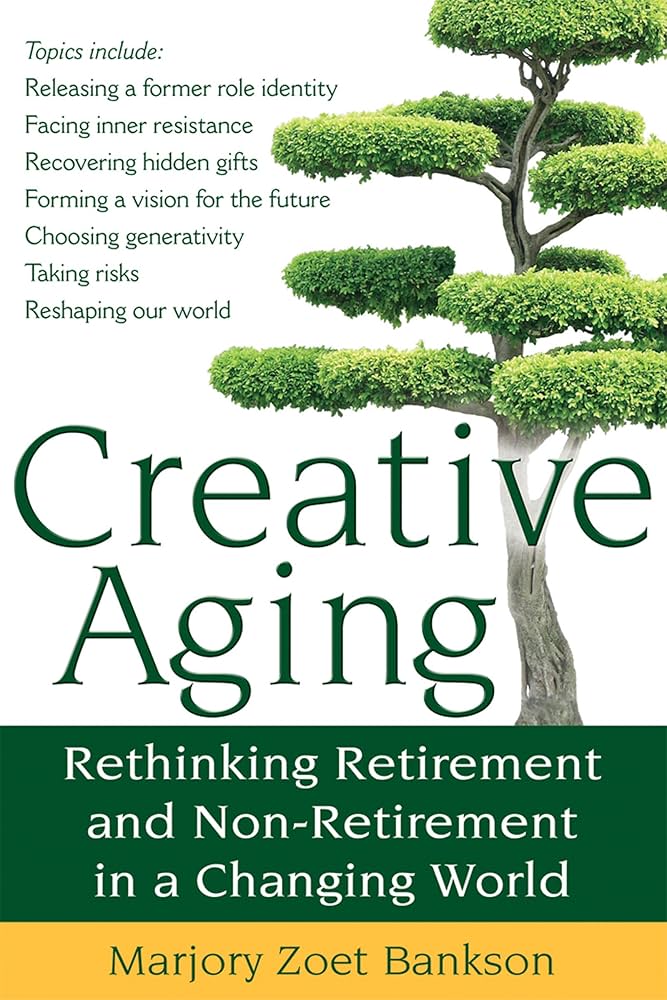Creative aging
by Admin
Posted on 20-04-2025 04:35 PM

What is Creative Aging?
Creative aging is a holistic approach that aims to promote healthy aging by engaging older adults in creative activities. It recognizes that creativity is not limited to artistic expression but can be applied to various aspects of life, such as problem-solving, learning, and social interaction. Creative aging programs often focus on building cognitive reserve, promoting social engagement, and enhancing emotional well-being. These programs can be tailored to meet the needs and interests of older adults, whether it's through group classes, one-on-one instruction, or self-directed activities.
Benefits of Creative Aging
The benefits of creative aging are numerous and well-documented. Engaging in creative activities has been shown to improve cognitive function, particularly in areas such as memory, attention, and processing speed. Creative activities can also promote social engagement, reduce feelings of loneliness and isolation, and enhance emotional well-being. Additionally, creative aging can provide older adults with a sense of purpose and meaning, which is essential for maintaining a positive outlook on life. Furthermore, creative activities can be adapted to meet the needs of older adults with physical or cognitive limitations, making it an inclusive and accessible approach to promoting healthy aging.
Cognitive Benefits
The cognitive benefits of creative aging are significant. Engaging in creative activities has been shown to build cognitive reserve, which can help protect against age-related cognitive decline. Creative activities such as painting, drawing, and crafting require attention, memory, and problem-solving skills, which can help improve cognitive function. Additionally, creative activities can promote neuroplasticity, which is the brain's ability to adapt and change in response to new experiences.
Emotional Benefits
The emotional benefits of creative aging are also substantial. Engaging in creative activities can provide older adults with a sense of joy, fulfillment, and purpose. Creative activities can also promote relaxation, reduce stress, and enhance mood. Additionally, creative aging can provide older adults with a sense of control and agency, which is essential for maintaining a positive outlook on life. Furthermore, creative activities can provide an outlet for self-expression and communication, which can help older adults connect with others and build meaningful relationships.
Creative Aging Programs
Creative aging programs are designed to promote healthy aging by engaging older adults in creative activities. These programs can be offered in various settings, such as community centers, senior centers, and retirement communities. Creative aging programs can include a range of activities, such as art classes, music therapy, dance classes, and writing workshops. These programs are often led by trained instructors who can provide guidance, support, and encouragement. Additionally, creative aging programs can be tailored to meet the needs and interests of older adults, whether it's through group classes or one-on-one instruction.
Barriers to Creative Aging
Despite the benefits of creative aging, there are several barriers that can prevent older adults from engaging in creative activities. One of the main barriers is lack of access to creative aging programs. Many communities lack programs and services that cater to the needs and interests of older adults. Additionally, older adults may face physical or cognitive limitations that can make it difficult to participate in creative activities. Furthermore, older adults may lack the confidence or motivation to engage in creative activities, particularly if they have never tried them before.
Overcoming Barriers
To overcome the barriers to creative aging, it's essential to provide older adults with access to creative aging programs and services. This can include offering programs in community centers, senior centers, and retirement communities. Additionally, programs can be designed to meet the needs and interests of older adults, whether it's through group classes or one-on-one instruction. Furthermore, older adults can be encouraged to try new activities and pursue their interests, even if they have never tried them before. With the right support and encouragement, older adults can overcome the barriers to creative aging and reap the benefits of engaging in creative activities.
Conclusion
Creative aging is a holistic approach that aims to promote healthy aging by engaging older adults in creative activities. The benefits of creative aging are numerous and well-documented, and include improved cognitive function, social engagement, and emotional well-being. Creative aging programs can be designed to meet the needs and interests of older adults, and can be tailored to overcome physical or cognitive limitations. By providing older adults with access to creative aging programs and services, we can help promote healthy aging and improve the quality of life for older adults.
Future Directions
The future of creative aging is promising, with a growing recognition of the importance of promoting creative aging. As the population ages, there will be a greater need for programs and services that cater to the needs and interests of older adults. Creative aging programs can be expanded to include new activities and pursuits, such as technology-based programs and intergenerational programs. Additionally, research can continue to explore the benefits of creative aging and identify new ways to promote healthy aging.
FAQs
What is creative aging?
Creative aging is a holistic approach that aims to promote healthy aging by engaging older adults in creative activities.
What are the benefits of creative aging?
The benefits of creative aging include improved cognitive function, social engagement, and emotional well-being.
How can I get involved in creative aging programs?
You can get involved in creative aging programs by contacting your local community center, senior center, or retirement community to see what programs are available.
What if I have never tried creative activities before?
You can still get involved in creative aging programs, even if you have never tried creative activities before. Many programs are designed for beginners, and instructors can provide guidance and support.
Can creative aging programs be adapted for older adults with physical or cognitive limitations?
Yes, creative aging programs can be adapted to meet the needs of older adults with physical or cognitive limitations. Many programs are designed to be inclusive and accessible, and can be tailored to meet the needs of individual participants.
